#zsuzsanna budapest
Explore tagged Tumblr posts
Text
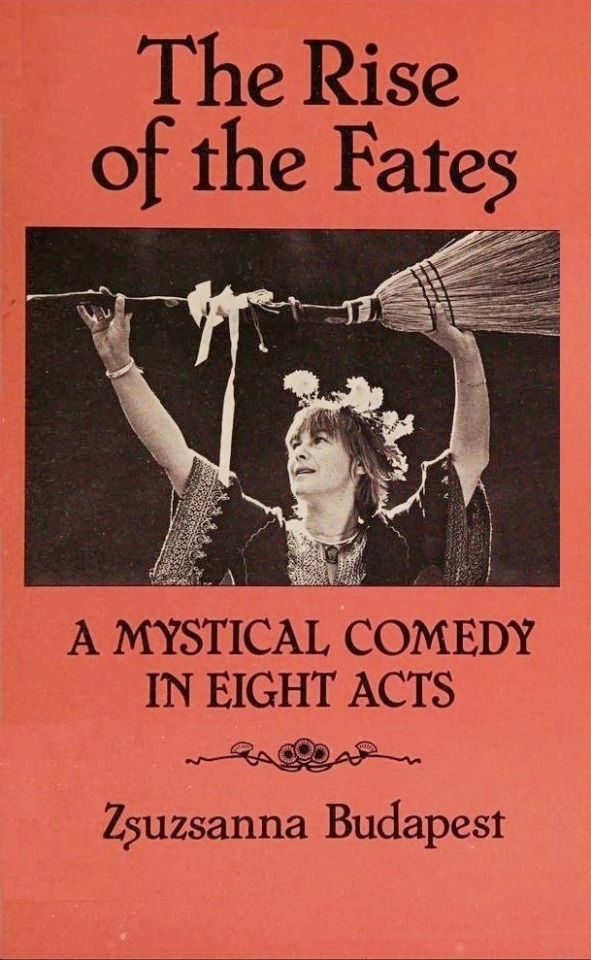
Zsuzsanna Budapest - The Rise of the Fates - Susan B. Anthony Coven no. 1 - 1976
#witches#risers#occult#vintage#the rise of the fates#susan b. anthony coven no. 1#susan b. anthony#zsuzsanna budapest#rise#fates#a mystical comedy in eight acts#mysticism#comedy#mystical comedy#eight acts#8 acts#1976#fate#broomstick#broom
18 notes
·
View notes
Text
"La diosa está viva. La magia está en marcha".
Zsuzsanna Budapest
www.tarotdeana.tumblr.com
#tarot#cartomancia#tarot reading#ocultismo#ocultista#tarot cards#witchcraft#brujería#artes ocultas#cosas de brujas#wicca#wiccan#triple goddess#triple diosa#zsuzsanna budapest
1 note
·
View note
Text

Zsuzsanna Vellai avec une Porsche 911 et un appareil photo Pentacon, église Matthias, Budapest, 1970.
61 notes
·
View notes
Text

Borbély Lajos Vocational Secondary School/Zsuzsanna Lorántffy College and Vocational School, Kissomlyó street, Salgótarján, 1980. From the Budapest Municipal Photography Company archive.
102 notes
·
View notes
Text

The Heroic Nanny: Erzsebet Fajo
She saved the entire family
Erzsebet Fajo was a brave young babysitter who saved the lives of her employers – a family of four – during the Nazi occupation of Hungary in 1944.
Erzsebet Fajo was a Slovakian girl from a poor family who emigrated to Hungary by herself at age 13 to work as a nanny. She found employment with the Abonyis, a Jewish family in the small town of Bekescsaba. Parents Laszlo and Margit treasured Erzsebet as a member of the family, and she became like a big sister to their two children, Zsuzsanna and Ivan.
In 1941, the family moved to Budapest because of anti-Jewish persecution in Bekescsaba, and of course Erzsebet went with them. Despite the violent turmoil engulfing Europe, life in Hungary was relatively normal for the Abonyi family. Hungarian President Miklos Horthy had an alliance with Hitler’s Germany, but was reluctant to enforce Nazi decrees against the Jews. That reluctance, plus Horthy’s secret attempts to strike a deal with the Allies, led Germany to invade Hungary in March 1944.
The country was now run by the pro-Nazi Arrow Cross party and the situation for Hungary’s Jews got very bad very quickly. All Jews from the moment of birth were required to wear a yellow star prominently displayed on their clothing. Erzsebet, who felt like a member of the Abonyi family, wanted to wear a star too even though she wasn’t Jewish. Instead, they sadly told her she’d have to leave their employment to save her own life – non-Jews weren’t allowed to work for Jews. The Abonyis knew their days were numbered. Ten year old Zsuzsanna tried to convince her parents to commit suicide rather than be separated and murdered. Of course they refused to consider such a drastic act and tried everything to get out of Hungary but they were trapped.
At that point, young Erzsebet stepped up to become the family’s savior. Zsuzsanna remembered, “How (could) she save (us)? She didn’t have any money. She didn’t have an independent life… It (was) very sweet, but it (had) no validity. But I was wrong to think that. When the siege of Budapest started (and) virtually every home was ruined and bombed down, she was in the streets trying to get false papers.”
Erzsebet visited the Abonyis every day, bringing them food as well as medicine and other essential goods. She took all their valuables and brought them to an aunt so they wouldn’t be plundered by the Nazis.
On October 15, 1944 Laszlo Abonyi was arrested at his home and taken to a deportation center, where he awaited transport to a brutal Nazi slave labor camp.
Determined to save him, Erzsebet boldly approached the Red Cross and somehow obtained a letter of protection that she used to get Laszlo released. She knew the Abonyis were not safe in their home, and not sure what to do she pleaded with a local priest for assistance and advice. He helped her get letters from the Vatican which made the family eligible to take shelter in a building in Budapest owned by the Apostolic Nuncio. The Abonyis sheltered there for a few weeks, until the facility was attacked by the Arrow Cross. Storm troopers forced all the Jews outside and prepared to shoot them on the banks of the Danube river. Somehow, in the chaos, Erzsebet helped all four Abonyis escape.
For the next two months, Erzsebet found hiding places for the Abonyis and obtained forged papers for them. She continued visiting each member of the family every day, even though they were all in different parts of Budapest. Finally Erzsebet found safe shelter for the family in a “White Cross Hospital” – an apartment building packed with bunk beds where families targeted by the Nazis were hiding out.
Hungary was liberated by the Soviet Union in January 1945 and the Abonyis were able to return to their apartment. After the war they legally adopted Erzsebet, making it official that she was a member of the Abonyi family. They sent her to school so she could get a good education, and left her a third of their estate. Zsuzsanna and her husband left Hungary following the failed revolution of 1956 and moved to the United States, where Zsuzsanna became a respected writer, professor and founder of the Holocaust Studies Program at the University of Texas. She maintained a close correspondence with her adopted sister until Erzsebet’s death in 1995.
Erzsebet Fajo was honored as Righteous Among the Nations by Israeli Holocaust Memorial Yad Vashem in 1986. In her testimony, Zsuzsanna said, “Driven by the desire to save us, Erzsi defied the Germans. She saved us from death, saved my brother and me from becoming orphans and my parents from the worst anguish that can befall people – the loss of their children. It was her strength and heroism that gave us life, allowed us to grow up and eventually have children of our own.”
For her astonishing bravery in saving the life of an entire family, we honor Erzsebet Fajo as this week’s Thursday Hero.
77 notes
·
View notes
Text
Magyarok. Amit ellophatnak, azt ellopják (Boráros tér) #mkkp #budapest
youtube
A magyar street art "aranykorának" hajnala: amikor még a semmit is ellopjuk
"Magyar, ne lopj" (bécsi bolti felirat)
"Nem csak fejétől bűzlik az ország ?magyar wc-bõlcsesség)
Boráros tér, Budapest: a hely, ahol az álmok haldokolnak, de az irónia szárnyal. Itt született meg a Hungarian Two-Tailed Dog Party (MKKP) legújabb remekműve – egy underground (szó szerint!) művészeti galéria, amely az állami közömbösséget és a városi lepusztultságot gúnyolja ki. Azonban, ahogy az már lenni szokott, a magyar valóság még a szatírát is túlszárnyalja: az értéktelen printeket – igen, azokat az 500 forintos műanyag reprókat – a nagyérdemű látogatók elkezdték lopni.
Az, hogy valaki ellopja ezeket a printeket, már-már költői igazságtétel: a művészet végül tényleg hazaér a szorgosan kecsölő néphez. Persze, a szajré piaci értéke olyan underdog szinten van, hogy egy hétvégi garázsvásáron is nehezen adnák el őket. De a lényeg itt nem is az érték – hanem maga a lopás rituáléja. A tolvaj valószínűleg inkább azzal dicsekszik önmagának, hogy a Kétfarkú Kutya Párt galériájából vitt haza "műkincset", mint hogy mondjuk tényleg értékelné az alkotásokat.
Az irónia megvalósulása
Az MKKP valoszínűleg maga is csak nevet a helyzeten: „Örülünk, hogy az emberek elviszik a képeket, így legalább újakat tehetünk ki, és tovább javíthatjuk az underground galéria élményét.” Pali bá, akinek zsebéből lassan több print ment ki, mint a közeli Spar napi minőségi bor forgalma, csak legyint: „Legalább nem a vizes zsemlét lopják.”
A street art nem műfaj, hanem magyar közéleti tükör
Ez az egész szituáció gyönyörűen példázza, hogy Magyarországon még a street art is lopakodó közélet. Amíg a városvezetés maximum egy újabb LED-kijelzőt tudna kitolni a Boráros térre, addig a helyi közösség és az MKKP összefogása művészeti projektté alakította a lepusztultságot. Az, hogy ezeket a képeket valaki hazaviszi, egyfajta abszurd tisztelgés is: még az iróniát is képesek vagyunk megszeretni, ha ingyen van.
De ne feledjük: Magyarországon bármi, ami mozdítható, az el is tűnik. Ha az új generációk múzeuma egy aluljáró, akkor a gyűjtők első generációja itt találja meg a kincseit. Talán a következő lépés az lesz, hogy valaki a falra felfestett sárgás húgyfoltokat próbálja majd privatizálni és áruba bocsátani.
A Boráros tér galériája nem csak a művészet, hanem a magyar társadalmi helyzet groteszk tükre is: a lehető legkevesebb erőforrással létrehozott projektet is képesek vagyunk kifosztani, miközben az állami közömbösség csendben figyel. A Kétfarkú Kutya Párt csak nevet, Pali bá fizet, és mi lopunk. Ez a Boráros tér valódi szellemisége – egyszerre nyomorúságos és csodálatos.
#MakeBorárosGreatAgain – vagy legalább lopjál el egy printet.
#mkkp Döme Zsuzsanna Suzi- MKKP #kétfarkúkutya Kovács András MKKP #kétfarkúkutya #kétfarkú Magyar Kétfarkú Kutya Párt #budapest #budapeststreetart #borárostéraluljáró #lakályosboráros #streetartgallerybudapest #budapeststreetart #magyartehátlop #borárosstreetart

11 notes
·
View notes
Text
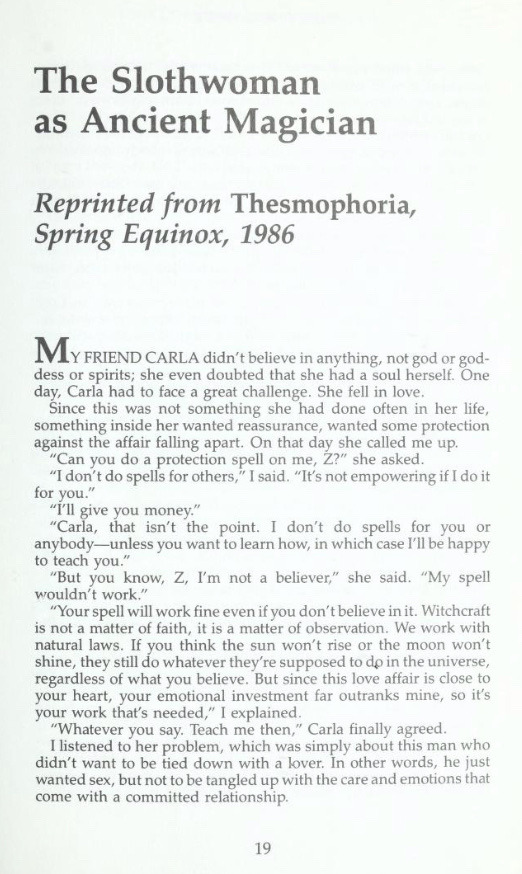
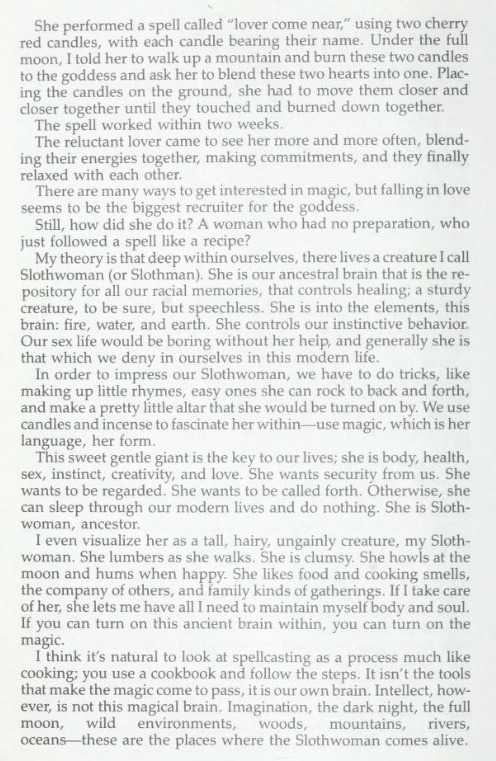
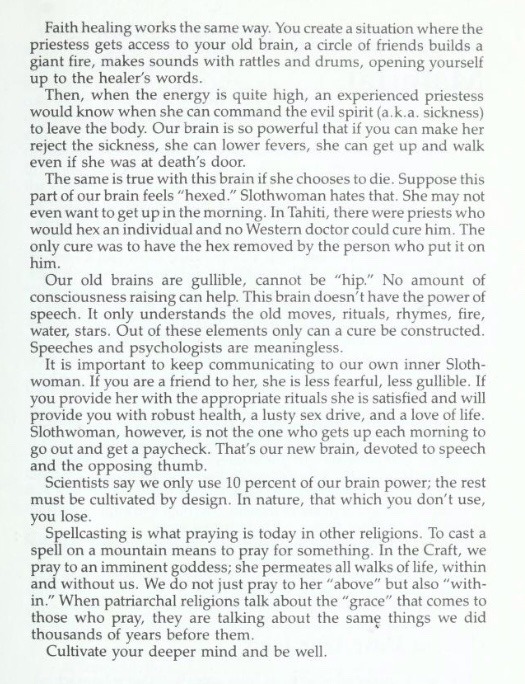
The Holy Book of Womyn’s Mysteries - Zsuzsanna Budapest
#yiv#dianic wicca#bearwoman#womens spirituality#goddess spirituality#goddess worship#deanism#filianism
146 notes
·
View notes
Text
Grimoir
This is a collection of myths, deities and rituals in either english or german language.
German
Mythologie
Deutschland
Domsagen um den Magister Gerhard
Matronenkult
Germanisch-keltische Matronen
Frau Herke/Harre, Frau Frick(e), Frau Gode/Wode
Nordsee
Ekke Nekkepem
Die Wellenmädchen
Nestis und ihre Ahnherrinnen
Die Regentrude
Die lange Anna (nicht authentisch)
Baduhenna
Saxnot
Die Idisen
Hludana
Amerika
Der Inka Pantheon
Mystische Orte der Inka
Ix Chel
Heidentum
Anatomie einer Völva
Strömungen des Neuheidentums
Neopaganismus
Wicca
Der gehörnte Gott
Mōdraniht
Niederlande
Nehalennia
Mittlerer Osten
Die drei Göttinnen von Mekka
Das Zoroasthentum
Nordafrika & arabischer Raum
Steinkulte
Banturegion
Südafrika
Griechischer Pantheon
Nemesis
Eris/Discordia
Römischer Pantheon
Die letzten Priesterinnen
Nordischer Pantheon
Rind
Sif
Thrud
Abrahamitische Mythen
Judentum
Christentum
Islam
Magie im Islam
Symbolik
Apotropaion
Augenidole
Die zwölf Archetypen
HerrIn der Tiere
Rituale & Zauber
Ritual der männlichen Impotenz
Der böse Blick
Atzmann Gedicht
Schutzöl für Empathen
Hoodoo/Voodoo
Goofer Dust
Lougawu
Heilsteine
Aztekenstein
Brekzienjaspis
Pflanzen
Amaranth
Birnbaum
Mais (el Choklo) der Inka
Kartoffel (la Papa) der Inka
Rezepte aus der Natur
Deo mit Salbei
Waschmittel aus Asche
Fichtenharzsalbe
English
Spells & Rituals
Clean up
Storm calling
Spell of courage and strengh
Don't mess with me tongue spell with Orisha Oya (prob. black magick)
Female Rituals
Chinese Gu
Incenses
Empath Protection Oil
Protection Oil
Summer Solstace Simming Pot
Mythology
The Americas
Yue & Calypso, Hollywood, USA (the only fictional deities I respect)
The Aztec Pantheon
The Legend of Queen Chalchiuhnenetzin
The Nazca Pantheon
The Mayan Pantheon
The Moche/Chimu Pantheon
Huaca de luna creation legend
Germany
Rán
Ráns Daughters
Frau Perchta
Saxnot
Hariasa
Greek/Roman Pantheon
Nike/Victoria
Dike
Circe
Eris
Abrahamic mythology
Satan (Šaiṭān)
The first words god spoke to eve
Judaism
Christianity
Islam
Middle East
Ancient Arabian Creatures Masterpost
The First Words God Spoke To Eve
Ishtar
Nanna
Pazuzu
Sumerian Pantheon
Mesopotamian Pantheon (x)(x)(x)
Mesopotamian Monsters
Pre Islamic Godesses Masterpost
Al-Uzza pictured in ancient necklace
Anctient south arabian glyphes
Baityl - sacred stones of the arabs
Al-himā - sacred precincts of the arabs
Ancient Egypt
The actual names of the egyptian gods
Somalia
Queen Araweelo
India
The Waq-Waq Tree
Hoodoo/Voodoo
Women mistaken for lougawu
Symbols
Master the devil archetype
Zsuzsanna Budapest about Dianic Wicca
Plants
Amarant
Wisdom
Spiritual Curve
Dianic Wicca
31 notes
·
View notes
Text
anyways one of the speakers today had a freudian slip and referred to zsuzsanna budapest as babygirl
2 notes
·
View notes
Text
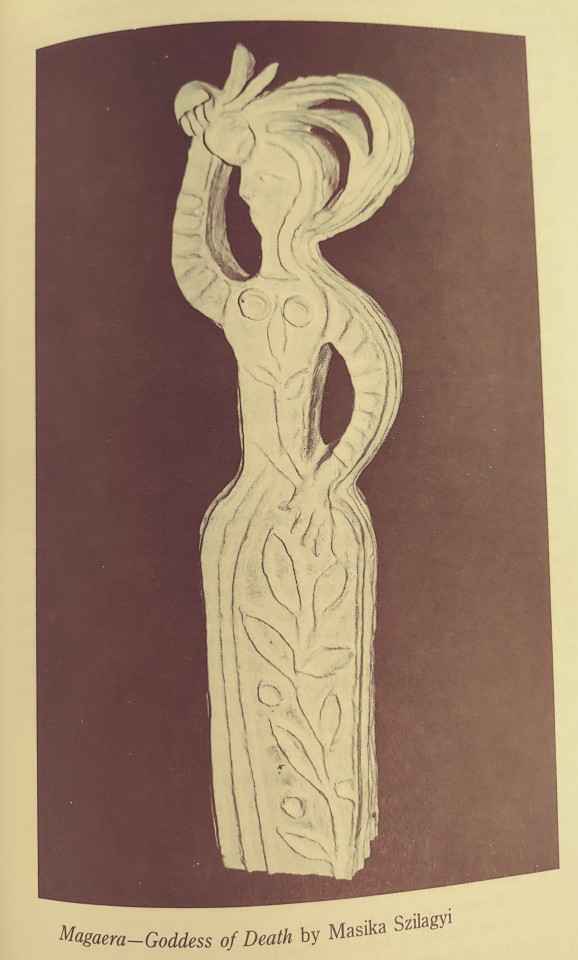
from Zsuzsanna Budapest's The Holy Book of Women's Mysteries
text: Magaera - Goddess of Death by Masike Szilagyi
17 notes
·
View notes
Text
Dianic Wicca: A Brief Description and History
Also known as Dianic Witchcraft, this is a modern pagan goddess tradition that focuses itself on the female experience and empowerment.
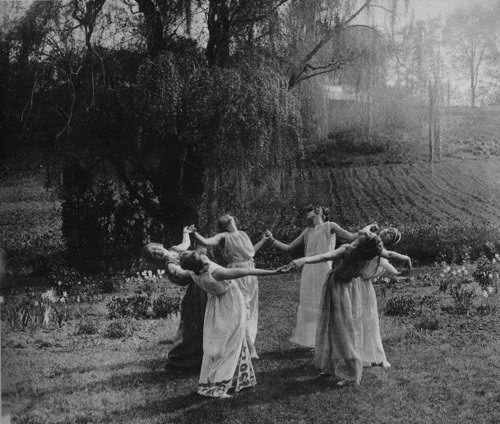
Beliefs
Dianic Wiccan ritual and belief structures are a combination of different elements from British Traditional Wicca, Italian folk-magic, New Age beliefs, and many Celtic influences. While some adherents identify as Wiccan, Dianic Wicca differs from most traditions of Wicca in that only goddesses are honored (whereas most Wiccan traditions honor both female and male deities).
While Diana does have a triple aspect, it is in Her aspect as Virgin Huntress that She guides Her daughters to wholeness. She is “virgin” in the ancient sense of “She Who Is Whole Unto Herself.” The ancient meaning of “virgin” described a woman who was unmarried, autonomous, belonging solely to herself. The original meaning of this word was not attached to a sexual act with a man. Diana/Artemis did not associate herself or consort with men, which is why these Goddesses are often understood to be lesbian.
Barrett, Ruth Rhiannon (2008). "Lesbian Rituals and Dianic Tradition". Journal of Lesbian Studies.
Practices
Covens typically practice meditation and visualization in addition to different forms of spell work. Practitioners focus on healing themselves from wounds given by individual men or that of the patriarchy, while also affirming the state and value of their womanhood.
Rituals may include reenacting spiritual/religious lore from a female-centered standpoint, with the theme of celebrating the female body and grieving the consistent societal abuses of women.
Some Dianic Wiccans eschew manipulative spellwork and hexing because it goes against many interpretations of the Wiccan Rede. However, many other Dianic witches (notably Budapest) do not consider hexing or binding of those who attack women to be wrong, and actively encourage the binding of rapists.
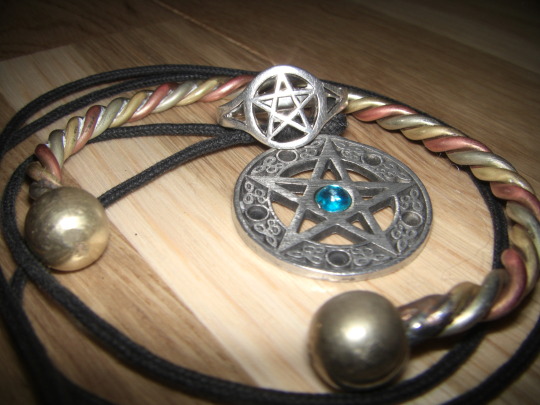
Zsuzsanna Budapest
Budapest's branch of Dianic Wicca began on the Winter Solstice of 1971, when Budapest led a ceremony in Hollywood, California. She is considered to be the “mother of modern Dianic Wicccan tradition”.
She claims her mother was a witch and a medium; therefore, Z herself is a hereditary witch (meaning a witch by birthright). She was on the staff of the first Women's Center in the U.S. there for many years, and became the Founder and High Priestess of Susan B. Anthony Coven #1 (the first women-only witches' coven). She was responsible for the creation of an Anti-Rape Squad and the Take Back the Night Movement in Southern California, facilitating a great many of their street marches.
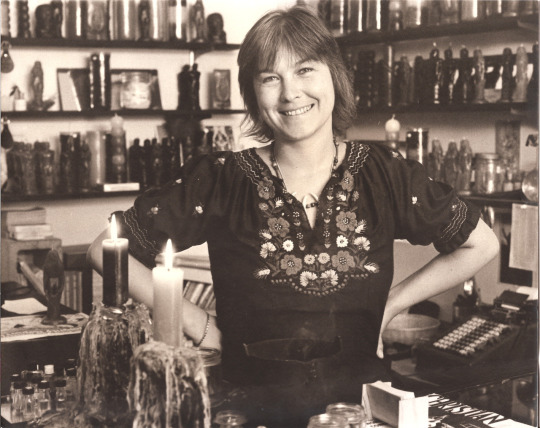
Criticism for Transphobia
It is important to note that while Dianic Wicca has proven to be a safe space for many cisgender women, it has not been incredibly open towards transgender sisters. In February 2011, Zsuzsanna Budapest conducted a ritual with the Circle of Cerridwen at PantheaCon for "genetic women only" from which she barred trans women as well men. This has created a backlash against Budapest, claiming that she is a transphobic lesbian-separatist leading an exclusionary movement.
37 notes
·
View notes
Text
Jul - Dec 2023 Reading List:
Bernard, Jessie. The Future of Marriage. New Haven: Yale University Press, 1982.
Budapest, Zsuzsanna Emese. The Holy Book of Women’s Mysteries. San Francisco: Weiser, 2007.
Cady Stanton, Elizabeth, “The Destructive Male.” 1868. http://edchange.org/multicultural/speeches/stanton_destructive_male.html
Chollet, Mona. In Defense of Witches: The Legacy of the Witch Hunts and Why Women are Still on Trial. New York: St. Martin’s Press, 2022.
Christ, Carol P. Rebirth of the Goddess: Finding Meaning in Feminist Spirituality. Reading, MA: Addison-Wesley, 1997.
Cloninger, Sally J. “A Rhetorical Analysis of Feminist Agitation.” The University of Michigan Papers in Women’s Studies 1, no. 1 (February 1974): 44-50. https://quod.lib.umich.edu/m/mfs/acp0359.0001.001/46:4
Daly, Mary. Beyond God the Father: Toward a Philosophy of Women’s Liberation. Boston: Beacon Press, 1973.
Dworkin, Andrea. Right-Wing Women. New York: G. P. Putnam’s Sons, 1983.
Echols, Alice. Daring to Be Bad: Radical Feminism in America: 1967-75. Minneapolis: University of Minnesota Press, 1989.
Eisler, Riane. The Chalice and the Blade: Our History, Our Future. New York: HarperCollins, 1987.
Faludi, Susan. Backlash: the Undeclared War Against American Women. New York : Crown Publishers, Inc., 1991.
Frymer-Kensky, Tikva. In the Wake of the Goddesses: Women, Culture, and the Biblical Transformation of Pagan Myth. New York: The Free Press, 1992.
Griffin, Susan. Pornography and Silence: Culture’s Revenge Against Nature. New York: Harper & Row, 1981.
Harding, M. Esther. Woman’s Mysteries: Ancient and Modern. Boston: Shambhala, 1990.
Janega, Eleanor. The Once and Future Sex: Going Medieval on Women’s Roles in Society. New York: W. W. Norton & Company, 2023.
Johnson, Sonia. From Housewife to Heretic. Garden City, N.Y: Doubleday, 1981.
Jones, Ann. Women Who Kill. New York: Holt, Rinehart, and Winston, 1980.
Jones, Beverly and Judith Brown. “Toward a Female Liberation Movement.” Jul 1968. https://www.redstockings.org/index.php/main/classics-of-1968
Judd, Elizabeth. “Women Before the Conquest: A Study of Women in Anglo-Saxon England.” The University of Michigan Papers in Women’s Studies 1, no. 1 (February 1974): 127–49. https://quod.lib.umich.edu/m/mfs/acp0359.0001.001/129:8
Koedt, Anne. “The Myth of the Vaginal Orgasm.” 1970. https://www.cwluherstory.org/classic-feminist-writings-articles/myth-of-the-vaginal-orgasm#
New York Radical Women, Notes From the First Year (June 1968). https://www.redstockings.org/index.php/main/classics-of-1968
Raworth, Kate. Doughnut Economics: Seven Ways to Think Like a 21st Century Economist. White River Junction: Chelsea Green Publishing, 2017.
Reed, Evelyn. “The Myth of Women’s Inferiority.” The Myth of Women’s Inferiority by Evelyn Reed 1954. Accessed July 9, 2023. https://www.marxists.org/archive/reed-evelyn/1954/myth-inferiority.htm.
Spender, Dale. There’s Always Been a Women’s Movement This Century. London: Pandora Press, 1983.
Starhawk. The Spiral Dance: A Rebirth of the Ancient Religion of the Great Goddess. San Francisco: HarperSanFrancisco, 1999.
Women’s Majority Union, Lilith (Dec 1968). https://www.redstockings.org/index.php/main/classics-of-1968
Zeisler, Andi. We Were Feminists Once: From Riot Grrrl to CoverGirl®, the Buying and Selling of a Political Movement. New York: BBS PublicAffairs, 2016.
11 notes
·
View notes
Text

Zsuzsanna Vellai avec une Porsche 911 et un appareil photo Pentacon, église Matthias, Budapest, 1970.
2 notes
·
View notes
Text
15. Harsányi Géza Emlékverseny eredményei
Szeged Város Nemzetközi Turuljáték Bajnokság
2023. augusztus 13.
A 15. dr. Harsányi Géza Emlékverseny eredményei
Támogató: dr. Körmendy Mária és Kohári Nándor
Helyszín: Szeged, Erzsébet Liget
Talaj: füves
Gyermek fiú egyéni
1. Dervarics Alex (Svájc, Bussigny)
2. Berecz Márton (Szeged)
Ifjúsági leány egyéni
1. Zsivicz Dorina (Szeged, Radnóti Gimnázium)
2. Dervarics Lilla (Svájc, Bussigny)
3. Berecz Rita (Szeged)
Ifjúsági fiú egyéni
1. Ifj. Berecz Árpád (Budapest)
2. Zsivicz Máté (Szeged, Radnóti Gimnázium))
3. Berecz László (Szeged, Karolina Gimnázium)
Berecz Botond (Szeged)
Ifjúsági fiú páros
1. Ifj. Berecz Árpád (Budapest) - Berecz László (Szeged, Karolina Gimnázium)
2. Berecz Zoltán (Szeged) – Berecz Botond (Szeged)
3. Dervarics Alex (Svájc, Bussigny) – Zsivicz Máté (Szeged, Radnóti Gimnázium)
Női egyéni
1. Joó Gyöngyi (SZTE)
2. Börcsök Abigél (Szeged, Zrínyi Ilona Ált. Isk.)
3. Dervarics Lilla (Svájc, Bussigny)
Zsivicz Dorina (Szeged, Radnóti Gimnázium)
Férfi egyéni
1. Császár József (Szeged)
2. id. Berecz Árpád (Szeged)
3. Korom Árpád (Szeged)
Zsivicz József (Szeged)
Női páros
1. Dervarics Lilla (Svájc, Bussigny) - Joó Gyöngyi (SZTE)
2. Zsivicz Dorina (Szeged, Radnóti Gimnázium) – Zsivicz Mónika (Szeged)
3. Börcsök Abigél (Szeged, Zrínyi Ilona Ált. Isk.) – Berecz Rita (Szeged)
Berecz Varga Zsuzsanna (Szeged) – Császárné Dancsó Etelka (SZTE)
Férfi páros
1. Ifj. Berecz Árpád (Budapest) – id. Berecz Árpád (Szeged)
2. Császár József (Szeged) – Korom Árpád (Szeged)
3. Zsivicz József (Szeged) - Zsivicz Máté (Szeged)
Berecz Botond (Szeged) – Berecz Zoltán (Szeged)
Vegyes páros
1. Börcsök Abigél (Szeged, Zrínyi Ilona Ált. Isk.) – Zsivicz József (Szeged)
2. Joó Gyöngyi (SZTE) –Császár József (Szeged)
3. Dervarics Lilla (Svájc, Bussigny) - Ifj. Berecz Árpád (Budapest)
Berecz Varga Zsuzsanna (Szeged)– id. Berecz Árpád (Szeged)
Szenior férfi egyéni
1. Zsivicz József (Szeged)
2. Korom Árpád (Szeged)
0 notes
Text

Borbély Lajos Vocational Secondary School/Zsuzsanna Lorántffy College and Vocational School, Kissomlyó street, Salgótarján, 1980. From the Budapest Municipal Photography Company archive.
57 notes
·
View notes
Text
15. Harsányi Géza Emlékverseny eredményei
Szeged Város Nemzetközi Turuljáték Bajnokság
2023. augusztus 13.
A 15. dr. Harsányi Géza Emlékverseny eredményei
Támogató: dr. Körmendy Mária és Kohári Nándor
Helyszín: Szeged, Erzsébet Liget
Talaj: füves
Gyermek fiú egyéni
1. Dervarics Alex (Svájc, Bussigny)
2. Berecz Márton (Szeged)
Ifjúsági leány egyéni
1. Zsivicz Dorina (Szeged, Radnóti Gimnázium)
2. Dervarics Lilla (Svájc, Bussigny)
3. Berecz Rita (Szeged)
Ifjúsági fiú egyéni
1. Ifj. Berecz Árpád (Budapest)
2. Zsivicz Máté (Szeged, Radnóti Gimnázium))
3. Berecz László (Szeged, Karolina Gimnázium)
Berecz Botond (Szeged)
Ifjúsági fiú páros
1. Ifj. Berecz Árpád (Budapest) - Berecz László (Szeged, Karolina Gimnázium)
2. Berecz Zoltán (Szeged) – Berecz Botond (Szeged)
3. Dervarics Alex (Svájc, Bussigny) – Zsivicz Máté (Szeged, Radnóti Gimnázium)
Női egyéni
1. Joó Gyöngyi (SZTE)
2. Börcsök Abigél (Szeged, Zrínyi Ilona Ált. Isk.)
3. Dervarics Lilla (Svájc, Bussigny)
Zsivicz Dorina (Szeged, Radnóti Gimnázium)
Férfi egyéni
1. Császár József (Szeged)
2. id. Berecz Árpád (Szeged)
3. Korom Árpád (Szeged)
Zsivicz József (Szeged)
Női páros
1. Dervarics Lilla (Svájc, Bussigny) - Joó Gyöngyi (SZTE)
2. Zsivicz Dorina (Szeged, Radnóti Gimnázium) – Zsivicz Mónika (Szeged)
3. Börcsök Abigél (Szeged, Zrínyi Ilona Ált. Isk.) – Berecz Rita (Szeged)
Berecz Varga Zsuzsanna (Szeged) – Császárné Dancsó Etelka (SZTE)
Férfi páros
1. Ifj. Berecz Árpád (Budapest) – id. Berecz Árpád (Szeged)
0 notes